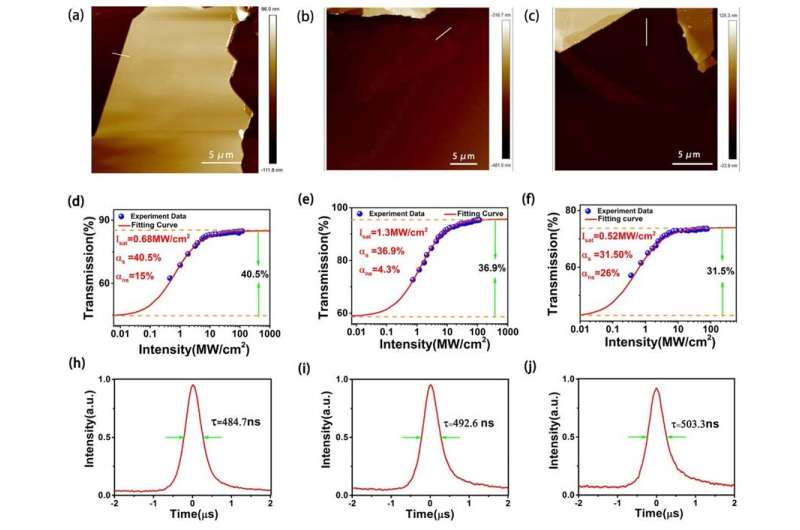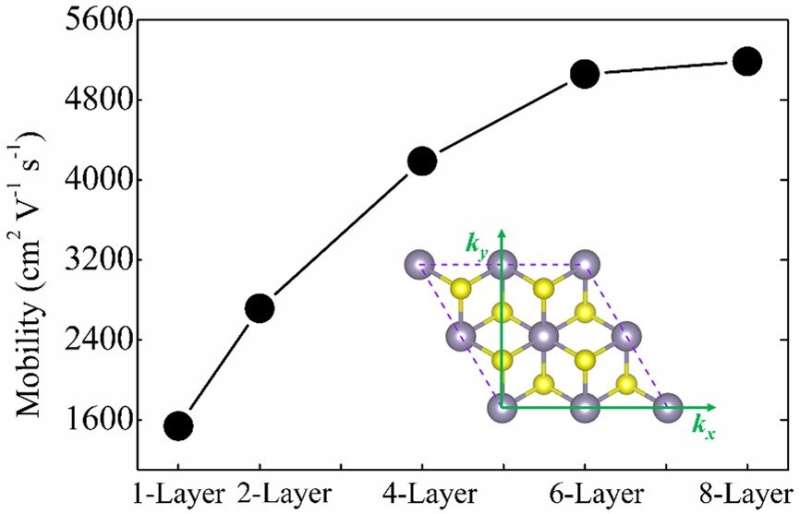Figure 1. The influence of SnS2 material thickness change on the nonlinearity of the device and the performance of the corresponding laser. Credit: Compuscript Ltd
Fiber lasers are widely used in the fields of optical communications, medical surgery, laser processing and lidar due to their advantages of good beam quality, compact structure, low cost and good compatibility. Therefore, they are considered to be one of the lasers with broad application prospects. On the other hand, with the further development of nanomaterial technology, two-dimensional materials with strong nonlinearity and fast relaxation process have gradually attracted widespread attention. So far, some two-dimensional materials have been successfully applied to fiber lasers as saturable absorbers and achieved ultrashort pulses.
However, the results show that the photoelectric properties of most two-dimensional materials are sensitive to the change of thickness. Materials of the same type with different thickness often show great differences in the band gap structure and carrier relaxation. Since the saturable absorber based on two-dimensional materials is an important photonic device that controls the output in lasers, the research and effective control of the properties of the saturable absorber inevitably become a breakthrough in the development of high-performance lasers. At present, most of the current hotspots focus on the preparation of materials and the development of new materials. Research on the thickness-related optical nonlinearity of two-dimensional materials is lacking. Therefore, it has important research significance to realize the nonlinear control of saturable absorber by changing the thickness.
In response to these problems, the research group of Professor Wenjun Liu from Beijing University of Posts and Telecommunications, cooperated with Professor Zhiyi Wei from the Institute of Physics of the Chinese Academy of Sciences and Professor Wei Guo from Beijing University of Technology, to systematically study the nonlinear control of the saturable absorber and the influence on the corresponding laser from both theoretical and experimental aspects. The researchers selected SnS2 material to prepare the saturable absorbers and have obtained photonic devices with different modulation depth by adjusting their thickness. Further analysis of the influence of different SnS2 saturable absorbers on the stability, output power, starting threshold and pulse duration of the laser has been made by building the Q-switched lasers based on different SnS2 saturable absorbers. In addition, the authors have theoretically calculated the influence of material thickness changes on its carrier mobility and band gap structure and have revealed the inherent reasons for the nonlinearity and absorption of saturable absorbers that vary with material thickness.
Relevant research can not only effectively realize the nonlinear control of saturable absorber, offer technical reference for the subsequent engineering design of new nonlinear photonic devices, but also provide the possibility for the development of high-performance fiber lasers. It is of great significance to further develop the industrial applications of photonic devices and lasers.
Figure 2. The relationship between electron mobility and the number of SnS2 layers. Credit: Compuscript Ltd
More information: Mengli Liu et al, Optical properties and applications of SnS2 SAs with different thickness, Opto-Electronic Advances (2021). DOI: 10.29026/oea.2021.200029
Provided by Compuscript Ltd

























